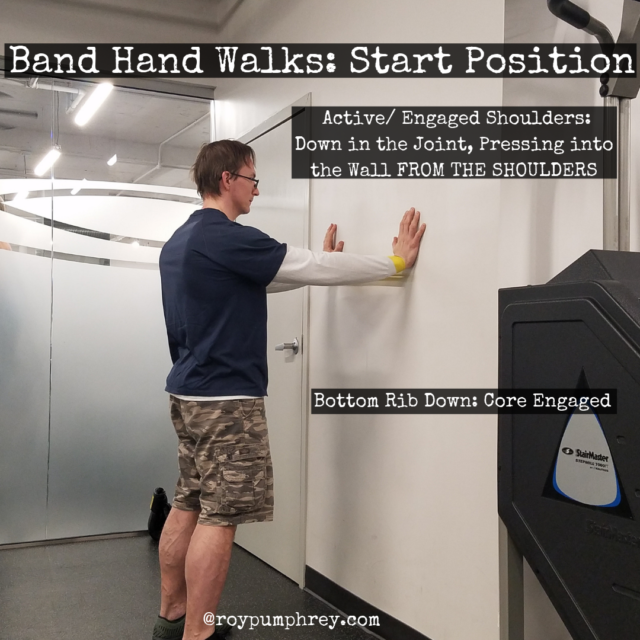
“I Think it’s my Rotator Cuff”
But it’s usually not.
It’s usually the delt, maybe the biceps tendon, occasionally the lat, often the pec minor
 See there’s a LOT of shit going on around the shoulder.
See there’s a LOT of shit going on around the shoulder.
That shoulder pain you’re having, it’s usually NOT the rotator cuff….
But sometimes it is and hearing the words,
“Its your rotator cuff”
Scares everyone.
But a LOT of people actually have FULL THICKNESS rotator cuff tears, and they’re fine.
An astonishingly high rate of rotator cuff tears in patients with asymptomatic shoulders was thus demonstrated with increasing patient age. – Age-related prevalence of rotator cuff tears in asymptomatic shoulders
Rotator cuff tears were present in 20.7% and the prevalence increased with age. Thirty-six percent of the subjects with current symptoms had rotator cuff tears, while 16.9% of the subjects without symptoms also had rotator cuff tears. Rotator cuff tears in the general population were most commonly associated with elderly patients, males, affected the dominant arm, engaged in heavy labor, having a history of trauma, positive for impingement sign, showed lesser active forward elevation and weaker muscle strength in abduction and external rotation. – Prevalence and risk factors of a rotator cuff tear in the general population.
But, if you have injured your rotator cuff you’re probably not going to need surgery unless its catastrophic or so chronic that its really progressed and you’re losing range of motion and strength and having constant pain and shoulder instability.
Most Rotator Cuff Injuries are Like ANY OTHER Injuries
If caught early in the process, they will stabilize and heal with proper treatment.
And that treatment doesn’t always have to be surgery,
patients treated for non-traumatic supraspinatus tears with three different interventions had a similar outcome at follow-up after one year. Contrary to our hypothesis, surgical repair of a supraspinatus tear does not improve the Constant score when compared with acromioplasty only or conservative treatment. The same was true for the patients’ subjective satisfaction. – Treatment of Nontraumatic Rotator cuff Tears
More and more, rotator cuffs (when they can be) are being treated successfully non-surgically <—-but if you are in chronic shoulder pain, you should go see a ortho MD and a PT and make sure you don’t need surgery.
Non surgical is really a code word for “Exercise”.
Exercise, especially shoulder-specific exercises, should be prescribed for all patients with shoulder impingement. The addition of manual therapy, tape, ECSWT and laser might add a small benefit. For other non-exercise physical therapy modalities, we cannot provide enough evidence for or against, therefore they should only be used in addition with exercise. Corticosteroid injections seems to be a valid alternative only when exercise or other modalities are not possible while NSAIDS can be helpful, if necessary, in addition to exercise. – Effectiveness of conservative interventions including exercise, manual therapy and medical management in adults with shoulder impingement: a systematic review and meta-analysis of RCTs
Head Shoulder Pain Off at the Pass
Imagine a world without painful shoulders.
A world where impingement was an antiquated idea, that we laugh about while drinking our $7 coffees.
Ok, none of that will happen.
We as a general population are going to keep having shoulder pain due to general weakness, postural adaptations and muscle imbalances.

Hell, if you’re using your shoulders ie, being physically active at all, you’ll probably develop some kind of shoulder pain at some point.
Let us remember,
The rotator cuff is a timing mechanism.
Its role is to center the humerus in the shoulder joint
If that Thoraco- Humeral- Scapular Rhythm is off, even if it’s not your rotator cuff to blame, you’re at risk for impingement and an ouchie.
However, if we work on the activation of the muscles around the scapula and that rhythm of the joints we can increase our “physiological buffer zone”.
Better our chances of having less severe, less often, shoulder pain and hopefully never need to go under a knife.
Banded Hand Walks
These are the bee’s knee’s because not only do they TORCH the rotator cuff they TORCH all the muscles around the shoulders.
Truth is, you can have all the rotator cuff you want.
If the other supporting muscles like the serratus anterior, mid and low traps, rhomboids, rear delts etc are not doing there jobs too, you’re running the risk of shoulder impingement.

 Checklist:
Checklist:
- Good Posture: Neutral spine throughout (cervical, thoracic and lumbar)
-
- “head on straight”
- “bottom rib on the abs”
- “belt line flat, parallel to ribcage”
-
- Shoulders DOWN
- Arms “long” <—a very slight bend in the elbows is fine (probably good) but that angle NEVER changes
- NO TWISTING Stay “flat” at the shoulders.
- Stay smooth
- Never allow the band to unload


Bro Tips:
- Go lighter. Most errors with Banded Hand Walks are caused by using a band that has too much tension.
- Longer sets over more band tension
- Shoulders NEVER RISE.
- Precision uber alles! STOP before technique changes even in the least
- Changing the patterns is a good thing, you’ll challenge the muscles of the shoulder and rhythm of the scapula to a greater degree than simply doing the same pattern constantly.
The #1 point to remember with Banded Hand Walks is
MOVE THROUGH THE SCAPULA
If you find yourself moving your elbows, bending, twisting, rounding over, hiking your shoulders, etc, IT’S DEAD WRONG and maybe even detrimental.
Stop, recheck your posture, try a lighter band and make smaller, more controlled movements.


